
ICRA 2018 Robots and Art Program
Creative Compliance
INTERNATIONAL CONFERENCE ON ROBOTICS AND AUTOMATION | 21-25 MAY 2018 | BRISBANE CONVENTION AND EXHIBITION CENTRE
Since the time of da Vinci, artists incorporate robots, machines, software and other emerging technologies into installations and performances to challenge conventional wisdom and to explore new means of creative expression. Artists such as Roxy Paine, Jean Tinguely, Billy Kluver, Rauschenberg, Andy Warhol, Stelarc, Paul McCarthy, Mark Pauline (SRL), Lynn Hershman, Natalie Jeremijenko, Michael Grey, Ken Rinaldo, Louis Philippe Demers, Bill Vorn, Ken Goldberg, Chico MacMurtrie, Ruairi Glynn, Patricia Piccinini, Petra Gemeinboeck, Michael Wihart and Ingrid Bachmann use novel materials to radically expand the possibilities for expressive and interactive machines. Their artworks pioneer new techniques for designing expressive robots, while also challenging assumptions about the evolving relationship between humans and technology.
NEWS:
- Selected videos of invited talks will be posted shortly.
- You can purchase the book Robots and Art: An Unlikely Symbiosis at a discounted price from Springer here.
The program at a glance
Building on the book: Robots and Art: Exploring an Unlikely Symbiosis (Springer: Summer 2016) the “Robots and Art” Forum will bring together artists, writers, scholars, and roboticists to explore the theme of “Creative Compliance,” where soft materials are incorporated into robotic artworks.
Through talks and hands-on mini-workshops, we will explore the innovative contributions of artists working with soft materials and soft machines. The forum will address questions of aesthetic design and control techniques and more philosophical inquiries concerning humanity’s complex relationships with machines and the relevance of artistic approaches for robotics. This forum will extend the success of past Robots and Art workshops (HRI 2010, ICRA 2011, ICSR 2014, IROS 2016).
Download the full program at a glance here.
Robot Art Forum – 24 May 2018
The full-day forum will include two hands-on workshops, leading speakers from the arts and robotics communities. CFP for extended abstracts/participation is here.
NOTE: Images courtesy of the invited speakers and the Creature Technology Company and are subject to copyright.
Robot Art Installation – 20-25 May 2018
An Art Installation by Patrick Tresset (3RNP) will be opened to the public throughout the conference period. Visitors can opt to have their portrait drawn by the robots. Book a time for a sitting by clicking the button below.
Creative Compliance
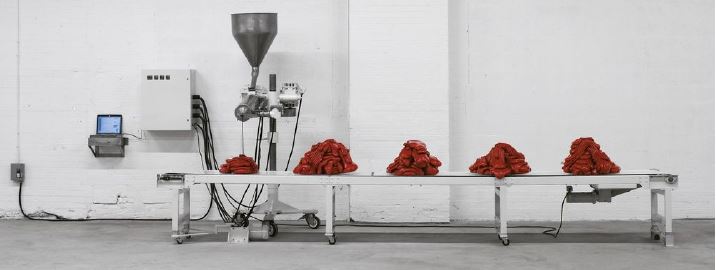
Program
ICRA 2018 Robots & Art Forum
24 May 2018,09:00am – 05:30pm, Plaza Level (P6)
Brisbane Convention and Exhibition Centre, Australia
9:00-9:10
Welcome by Damith Herath
9:10-11:00
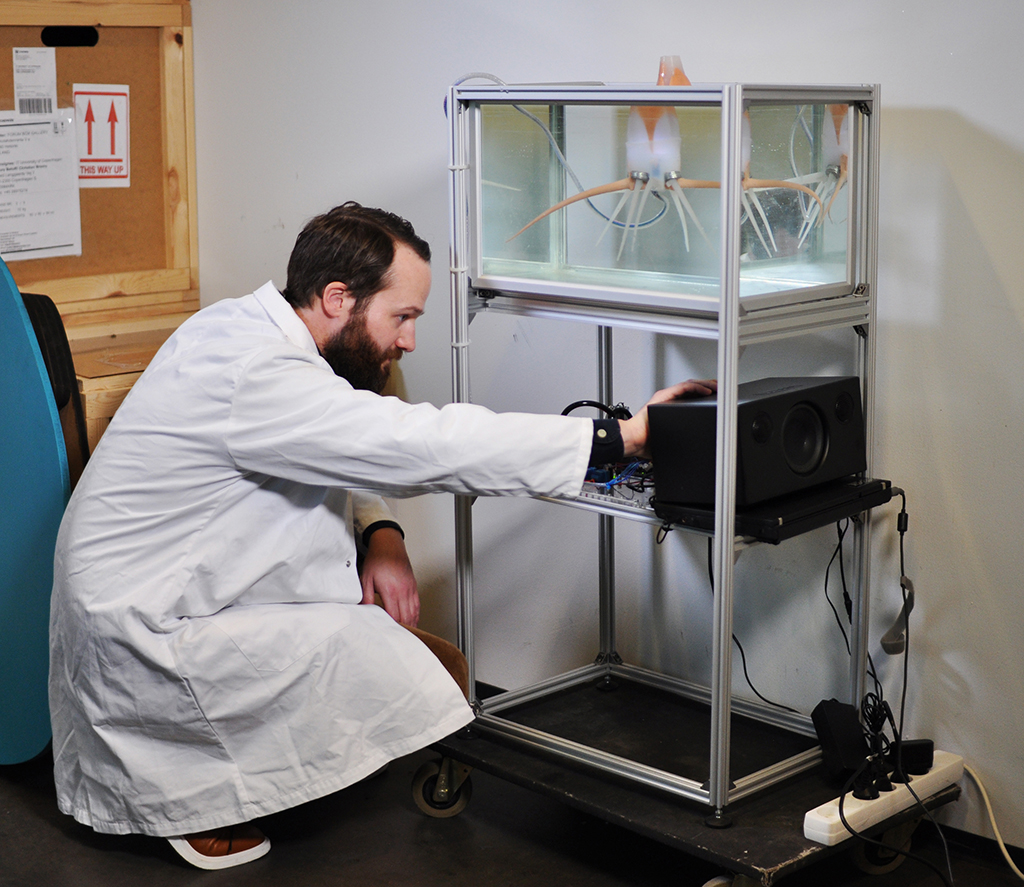
Workshop #1: Enacting and Encountering Soft Robots by Jonas Jørgensen
Click here for workshop details.
Jonas Jørgensen is a Danish researcher, media artist, and educator. He is formally trained as a physicist (BSc) and an art historian (BA, MA) at Copenhagen University and Columbia University. He is currently a PhD fellow at the IT University of Copenhagen with a project that interrogates soft robotic technology through art and aesthetics. His publications appear in academic journals and popular outlets including edited volumes, artist monographs, exhibition catalogues, art pedagogical journals, and conference proceedings. He has given lectures, presented papers, and organized workshops related to his research on soft robotics and robotic art at a number of international conferences and festivals including MediaArtHistories, ISEA, Pixelache, MOCO, HRI, and Aesthetics of the Posthuman. His artistic output has been exhibited at international institutions including Chronus Art Center (Shanghai, China), Forum Box (Helsinki, Finland), Kunsthal Grenland (Porsgrunn, Norway), and Nikolaj Kunsthal (Copenhagen, Denmark).
10:00-10:30
Design, Fabrication and Control of Soft Robots by Daniela Rus *ICRA Keynote
10:30-11:00
Morning Tea
11:00-11:30
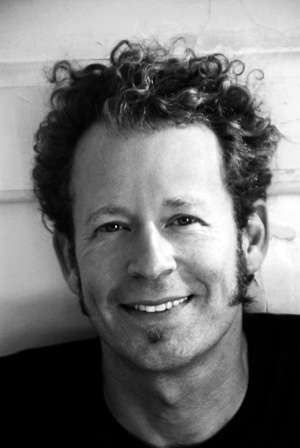
Beyond the Uncanny Valley by Ken Goldberg
“I want to be a robot.” – Andy Warhol In 1919, 101 years after Mary Shelley’s Frankenstein was published and one year before the word “robot” was coined, Sigmund Freud published an essay, Das Unheimliche, later translated into English as “The Uncanny”. The essay and the concept of the Uncanny are familiar to literary theorists and art historians, who have charted its the literary and theatrical origins of the concept through works by ETA Hoffman, Mary Shelley, Karel Capek, and Isaac Asimov, its rich history in psychoanalysis, aesthetics, and philosophy, from Jensch to Freud to Heidegger to Derrida to Cixous to what Martin Jay described as the “master trope” of the 1990’s. Roboticists are familiar with the Uncanny Valley, a related but distinct concept that originated in 1970, which relates to our contemporary fear and fascination with a broad variety of technologies from AI to cosmetics to robots to Siri to Google Glass to zombies. In my own art and research, I’m interested in mortality and the boundary between what is alive and what is life-like. I’ll present a series of short films and artworks that explore this boundary, including the Telegarden (1995-2004), an online installation that let participants tend a living garden using an industrial robot via the Internet (http://goldberg.berkeley.edu/garden/Ars/)
Ken Goldberg is an artist and professor UC Berkeley. Ken is a pioneer in internet-based robotic telepresence and Cloud-Based Robotics /Automation and has published over 200 peer-reviewed technical papers on algorithms for robotics, automation, and social information filtering; his inventions have been awarded eight US Patents. He is Editor-in-Chief of the IEEE Transactions on Automation Science and Engineering (T-ASE), Co-Founder of the African Robotics Network (AFRON), Co-Founder of the Berkeley Center for New Media (BCNM), Co-Founder and CTO of Hybrid Wisdom Labs, Co-Founder of the Moxie Institute, and Founding Director of UC Berkeley’s Art, Technology, and Culture Lecture Series which has hosted over 150 presentations by artists and curators. Ken’s artwork has been exhibited at Ars Electronica, ZKM, Centre Pompidou, ICC Biennale, Kwangju Biennale, Artists Space, The Kitchen, and the Whitney Biennial. For details on research and art, please visit: http://goldberg.berkeley.edu
11:30-11:50
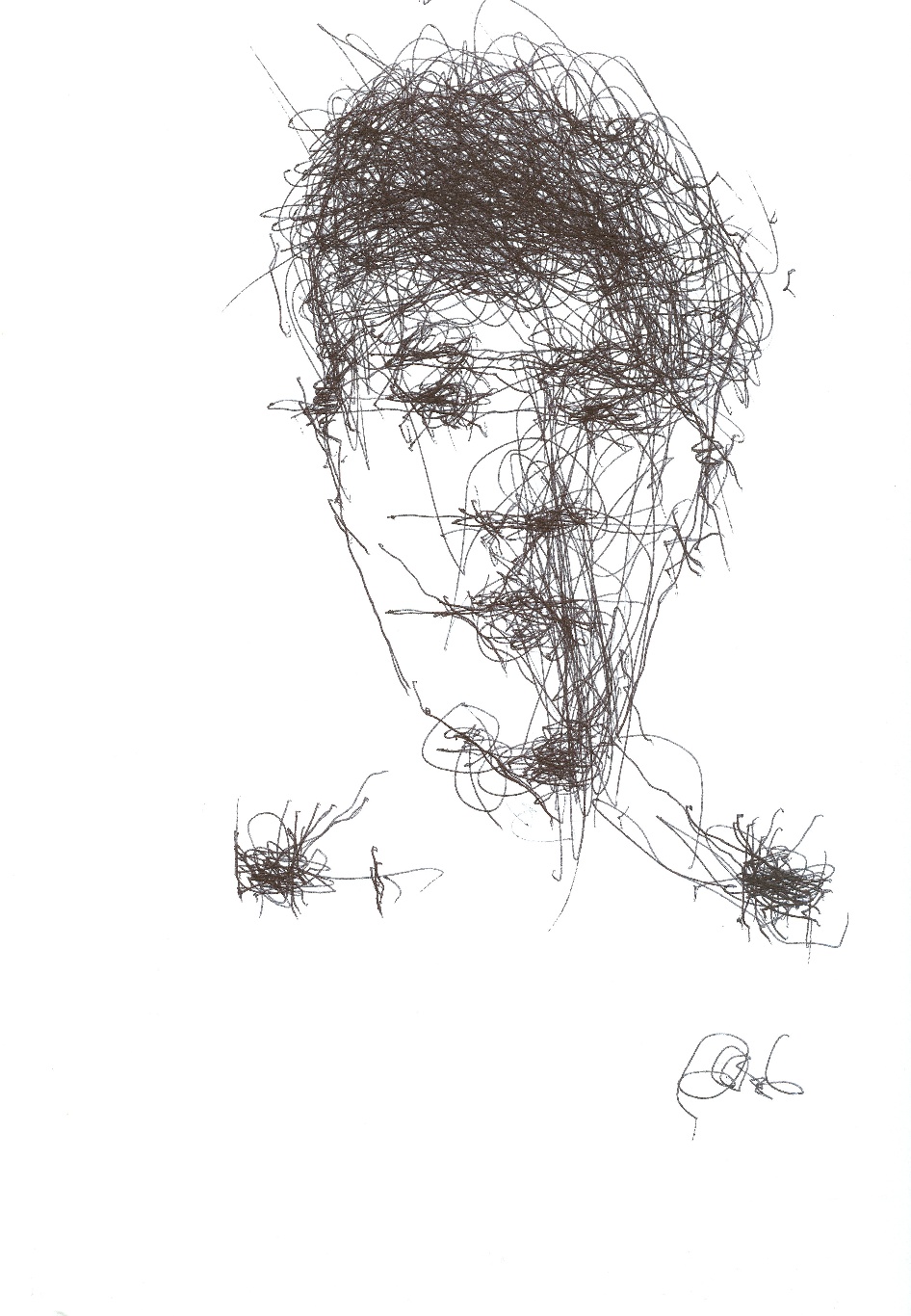
On the influence of constraints on an artistic practice by Patrick Tresset
As the theme of the forum, this year is compliance, we can consider its necessary complement: constraint. I will present and describe the design/artistic/physical/technological constraints that influence the development, production and exhibition of my robotic installations in a contemporary art context. I will end the talk with a brief comment on the influence of joints compliance on drawing style.
Patrick Tresset is a London based artist. His art practices follow two main path, on one hand Tresset presents theatrical installations in which robotic agents are actors, these installations are often evocations of humanness. Tresset crafts the computational systems driving the robots so that their behaviour can be perceived as artistic, expressive and obsessive. These systems are influenced by research into human behaviour, more specifically how humans make marks, how humans depict other humans, how humans perceive artworks and how humans relate to robots. On the other hand Tresset also uses robots and computational systems to produce series of drawings, paintings and videos.
11:50-12:10
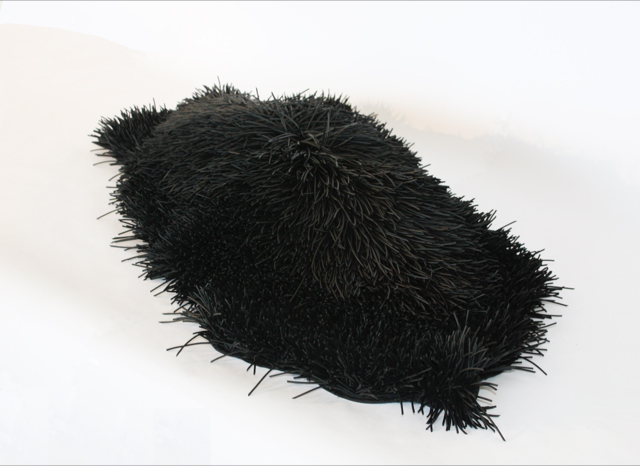
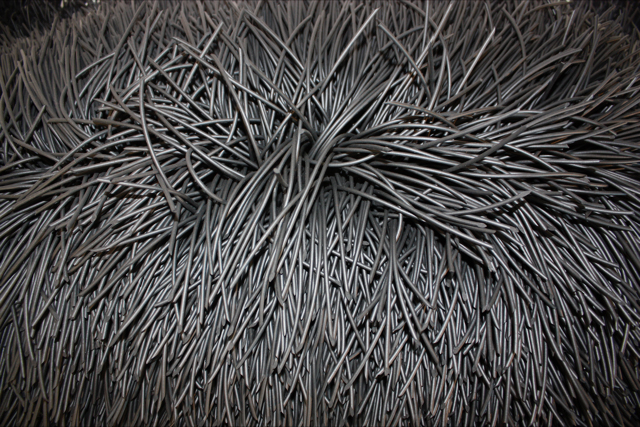
Tender Technologies and Paradoxical Bodies: Animal, Human and Machine Hybrids by Ingrid Bachmann
Many age old assumptions and practices are coming into question, long held views about nature, human nature, about the definition of life are being re- examined and in many cased abandoned. The proliferation of new technologies and media, advances in biotechnologies, AI, and genetic engineering are provoking a re-examination of the constitution of the terms “nature”, “human” and “machine”. Subsequently, the re- examination of these “essential” categories are likewise reshaping notions of self, society and other, and provoking some new and potent configurations of what constitutes life. One boundary to be breached in addition to organism/machine is the distinction between animal/human. Current developments in biotechnologies – xenotransplantation, michrochimerism – suggest that biology does matter and that the machine/human coupling is expanding into the machine/human/animal hybrid. In this talk I would like to explore a more thoughtful awareness of the complicated connections between bodies -human, animal, machine, and material bodies. I will look at some early examples of human- animal hybrids and then discuss an interactive and kinetic sculptural art project entitled Pelt (Bestiary) that explores some of these ideas. In Pelt (Bestiary) I wanted to give digital technology back its pelt – to bring the bestial and the messiness of the world back into the realm of digital technology and to continue my work in grounding the digital experience in the material realm. I am interested in the idea of tender technology, to use technology for ends that are not necessarily productive in the usual sense of the word.
Ingrid Bachmann is a Montreal artist who works in multiple formats including kinetic and interactive sculptures and installations, drawing, sound and video. Technology, both redundant and new, figure in her work as do the stories that are told around them. Bachmann has exhibited her working nationally and internationally including the 11th Biennial of Havana (Cuba), Manifestation D’art International 6, (Quebec), the Southern Alberta Art Gallery (Canada), as well as exhibitions and festivals in Belgium, the U.S., Estonia, Singapore, Peru, Cuba, Australia, Hong Kong, and the UK. Bachmann is currently Associate Professor in the Studio Arts Department at Concordia University in Montreal, Canada and the Director of the Institute of Everyday Life, art-ideas research lab.
12:10-12:30

Biological Robotic Realities: Interfacing human heart muscle cells to artistic robotic bodies by Nathan Thompson
The Bio Technology and Tissue Engineering industries are moving into the robotics field. No longer are our automatons just inspired or are mimicking the natural world, biology is now part of the process for actuation.
In many ways, it is inevitable that the trajectory is taking us in this direction but the problematic issues surrounding engineering and production of living machines is something that needs to be discussed.
We live in a “Control” culture where success is measured by the degree we affect the objects around us, our beliefs in the powers of technology to solve our problems err on the cultish. What does it mean to design and control a living machine? What do we do when things go wrong? What are the practical, artistic and ethical implications of doing so? The artist is perfectly situated to not only pull apart this hyped hope but also to shine a light into the dark corners so everyone is kept honest.
Biological Robotics is becoming a reality. It is but a continuum of 4.5 billion years of research really, cybernetics is coming to its “natural” conclusion and our algorithmic amour is starting to show cracks.
Nothing is black and white anymore, binary is passé – the future is biological.
Nathan John Thompson explores the possibilities of man/machine interaction, mechanical sentience and the hidden creative corners that arise from these relationships. His work often questions the role of humans in the natural landscape in order to build greater understanding of our inhabited space. Nathan has shown work and performed throughout Australia, Europe, Asia and Latin America, he is currently researching at SymbioticA – concentrating on IP Stem Cell technologies implementing bio-engineered human heart cells to drive astir soft/biological-robotics.
12:30-12:50
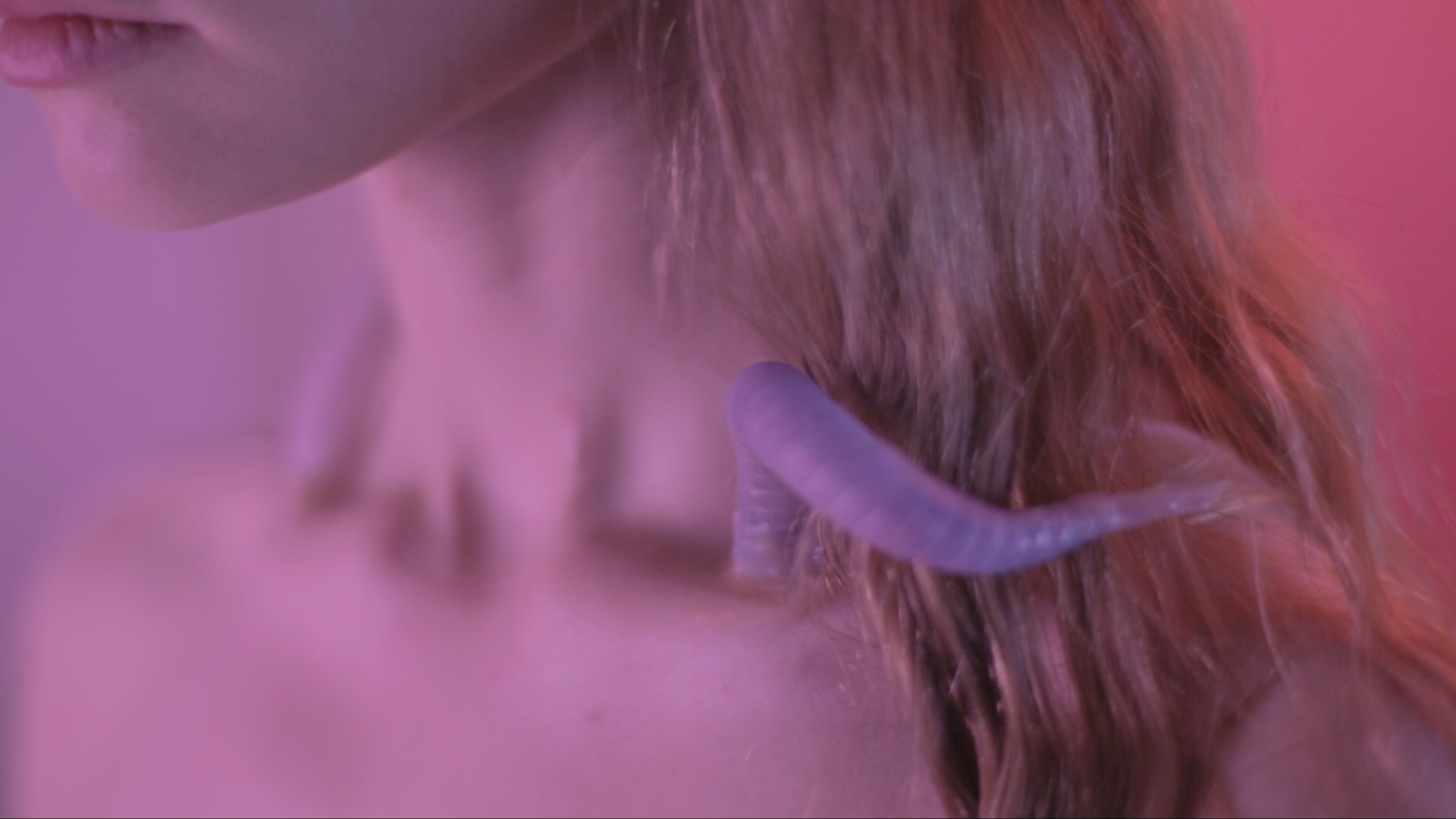
Sentimental Machines: Affective experience enabled by soft robotic interfaces by Caroline Yan Zheng
My research and practice investigate emotionally engaging properties of soft robotic artefacts, and the novel sensory experiences enabled by these creature-like machines, when interacting with the human body. I create wearable artefacts and toolkits to engage designers and the public in critically imagining possible affective relations with these disruptive materials. We explore novel modalities and meanings of interacting remotely through simulated physical contact. Through collaborative work, I also reflect on how design contributes to this emerging field.
Caroline Yan Zheng is a researcher and designer working at the intersection of fashion, soft robotics and experience design. Trained in ESMOD Paris for fashion design and pattern cutting, she holds an MA in Fashion Futures from London College of Fashion. She is currently a PhD candidate at the Royal College of Art, in Information Experience Design (IED) and Fashion. Her practice-led research explores the design space of affective, sensual interfaces and synthetic touch enabled by soft robotic technologies. She has also initiated Sentimental Machines, a cross-disciplinary forum exploring human-machine relationships mediated by affective technology and robotics. Her work and workshops have been at the V&A Museum, London Design Festival, STATE of Emotion Festival Berlin, Athens Digital Art Festival, and Manchester Science Festival, among others.
12:50-14:00
Lunch Break + Video Session
See here for the session details.
14:00-14:20
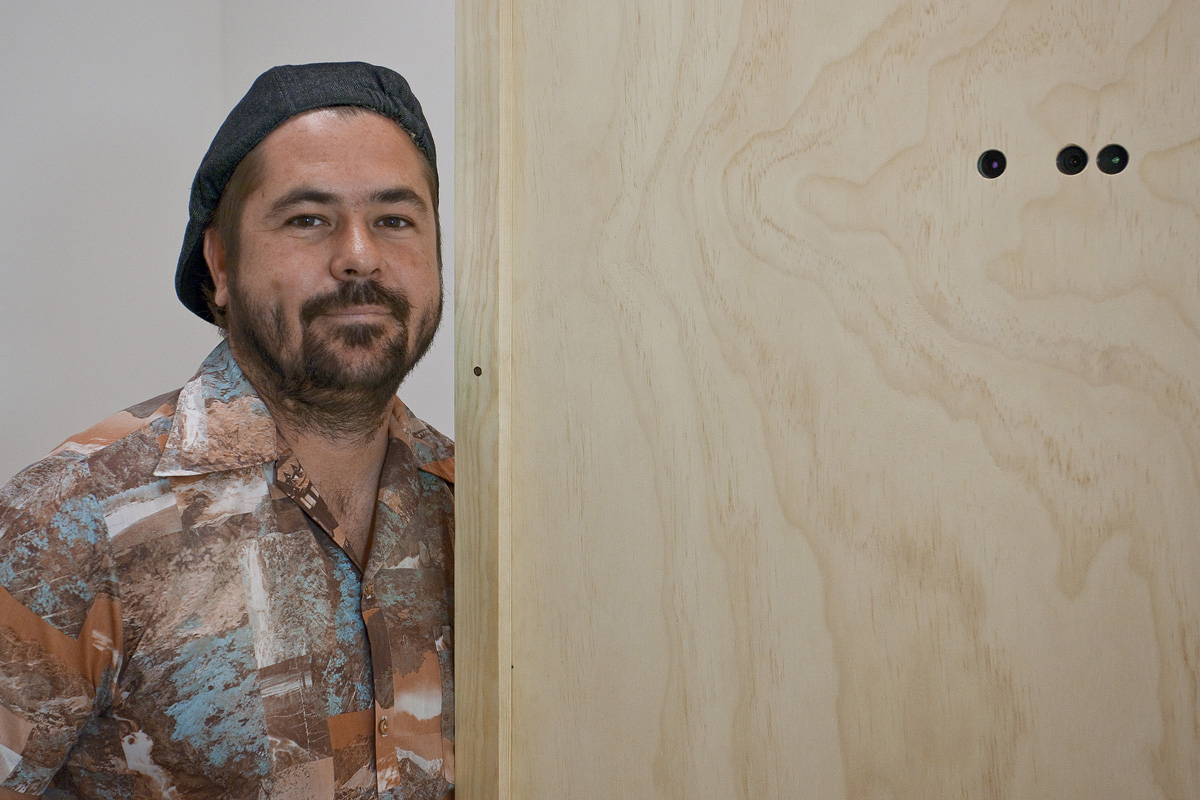
Recent investigations into robotic art – agency, dramaturgy, musicianship by Wade Marynowsky
Robot Opera has established an initial conceptual framework for robotic performance leading to initial insights into robotic performance agency and dramaturgy. The research invites the audience to consider robots as performance agents within a performative and dramaturgical system. It was found, through audience focus groups and eight festival performances, that notions of performance agency could arise from algorithmic non-human performance agents. It was also found that non-human performers could engage audiences in dramaturgical contexts across a sustained performance work. A secondary finding was that audience members tended to anthropomorphise robot performers and projected social formations and hierarchies onto them. Audio signals, speech-like sonic structures and recognizable vocal gestures were seen to influence this strongly as did algorithmic movement interactions with audience members.
Wade Marynowsky is one of Australia’s leading creative robotics artist’s. Achieving significant critical praise and international recognition for his performances and exhibitions. Working interdisciplinary and collaboratively across the arts, science and technology sectors, he specialises in the emergent and experimental practice of robotic performance art. His main body of work explores the notion of robotic performance agency by challenging notions of classical spectatorship and performance. Through the use humour, camp and a host of unnerving thematics he addresses important issues relevant to our ever increasing technological society. He has designed numerous interactive robotic art works for exhibitions and performances that constantly defy traditional concepts of how robots should act and behave.
14:20-14:40
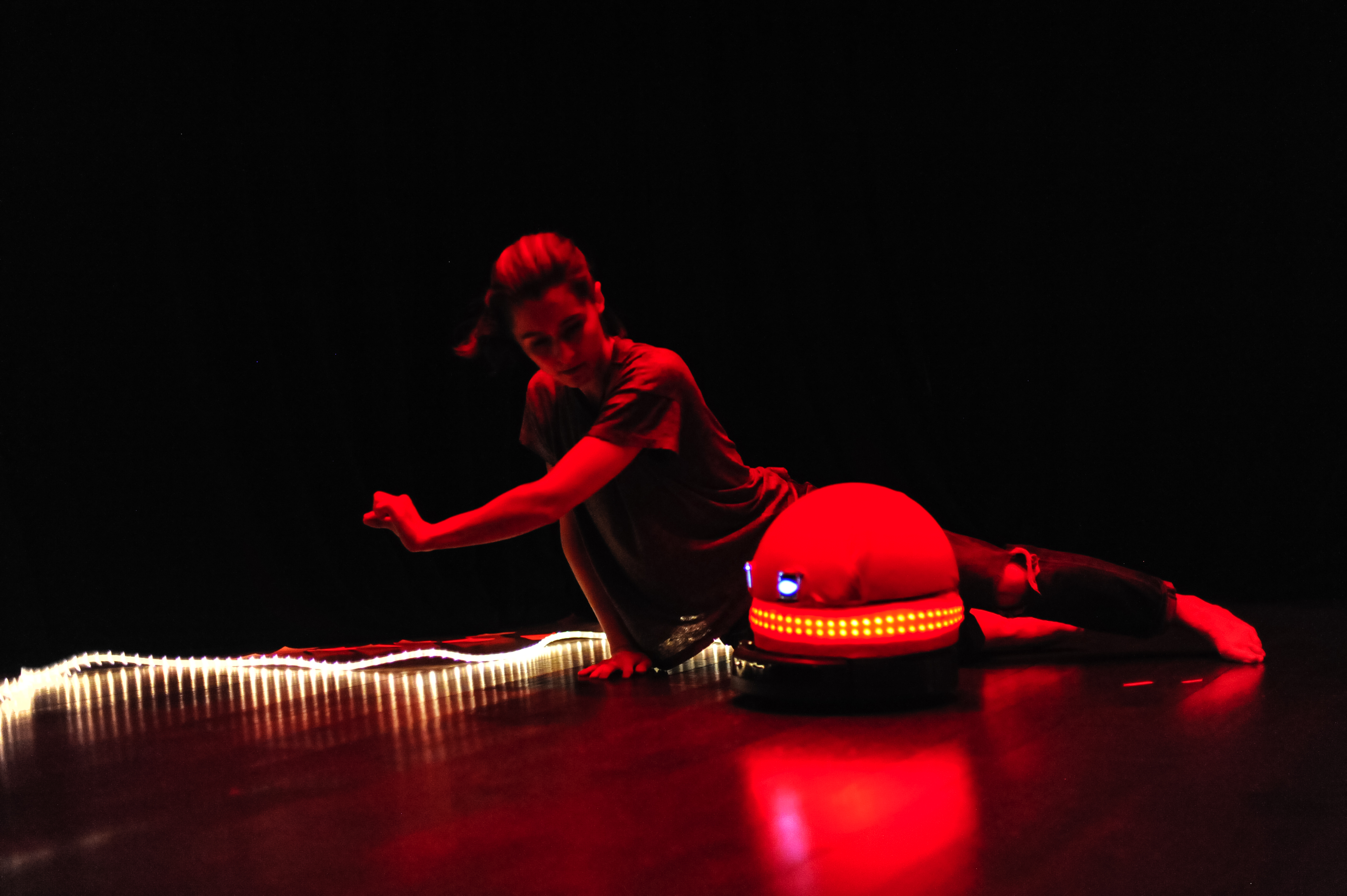
On Expressive Robotic Systems: Simultaneous Art and Experiment with Dancing Robo by Amy Laviers
Why would a robotics lab need an artist-in-residence? What’s the practical value in a “dancing” robot? The idea that function and expression can be divided is present in the first usage of the term “robot” in Capek’s science fiction play, RUR, where the characters discuss the differences between humans and robots in this light; indeed, this origin confuses the science around this aspect of robotics. Thus, I pose a formalism for the concept of expression – and its fundamental relationship with function – to inform robotic system design and analysis. Then, through embodied audience participation and visual aids, I will present ongoing work in my lab that is developing such expressive robotic systems and measuring their effect on humans through art and performance. I’ll explain how embodied movement exercises have informed the software and hardware design of in-development robots, how movement analysts are integral parts of this work flow, how perception of variable motion depends on context, and how an artistic performance acts as a live testbed for expressive robotic systems.
Amy LaViers is an assistant professor in the Mechanical Science and Engineering Department at the University of Illinois at Urbana-Champaign and director of the Robotics, Automation, and Dance (RAD) Lab. She is the recipient of a 2015 DARPA Young Faculty Award (YFA) and 2017 Product Design of the Year at the 4th Revolution Awards in Chicago for her automation software start up AE Machines. She completed a two year Certification in Movement Analysis (CMA) in 2016 at the Laban/Bartenieff Institute of Movement Studies (LIMS). Prior to UIUC she held a position as an assistant professor in systems and information engineering at the University of Virginia. She completed her Ph.D. in electrical and computer engineering at Georgia Tech with a dissertation that included a live performance exploring stylized motion. Her research began in her undergraduate senior thesis at Princeton University where she earned a certificate in dance and a degree in mechanical and aerospace engineering.
14:40-15:00
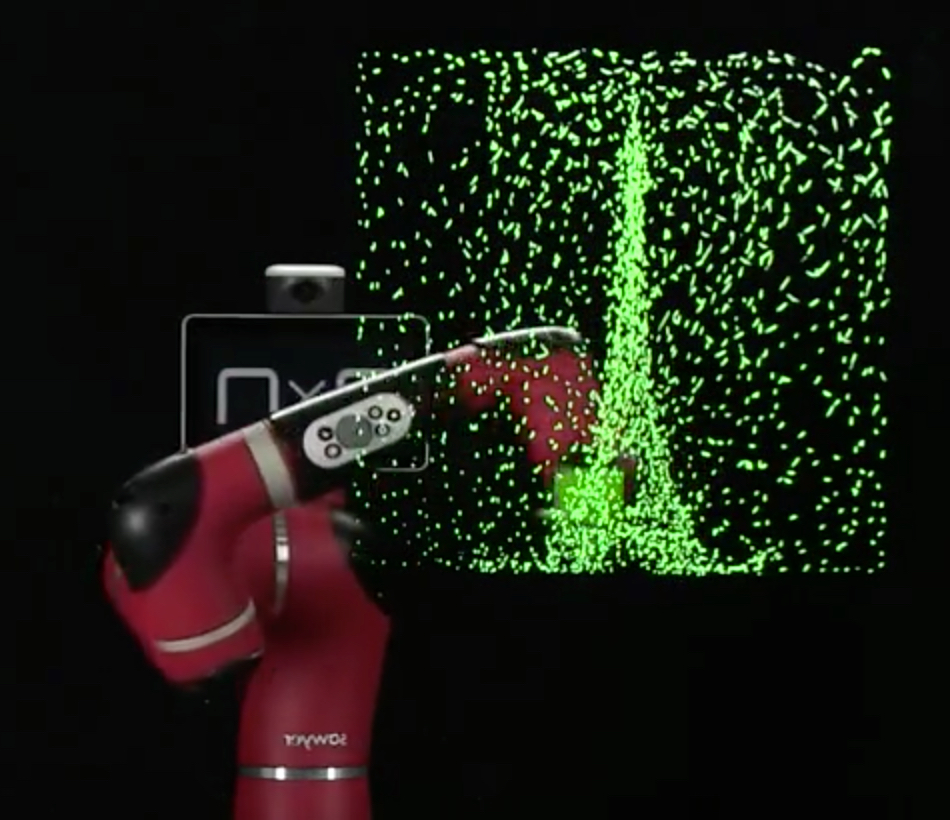
Robots that Draw and Automating Art by Todd Murphey
Robots are integrating into our lives as we are increasingly driven by driverless cars, have vacuums that autonomously clean our homes, and expect machines to deliver our packages. These capabilities seemingly mimic only low-level human capabilities, and the automation that enables them tends to be designed with low-level capabilities in mind. Robots that create artwork confront us with a different viewpoint of automation, a viewpoint that encourages us to wonder whether robots may be able to have creative capabilities similar to those we usually hold in reserve for ourselves. If a robot draws a beautiful portrait, is it creating art? If not, why not? This may come down to the sophistication and complexity we discern in the creation process, and in some cases drawing can be automated very simple tools.
Dr. Todd D. Murphey is a Professor of Mechanical Engineering and Physical Therapy & Human Movement Sciences at Northwestern University. He received his B.S. degree in mathematics from the University of Arizona and the Ph.D. degree in Control and Dynamical Systems from the California Institute of Technology. His laboratory is part of the Neuroscience and Robotics Laboratory, and his research interests include computational methods for mechanics and real-time optimal control, human-in-the-loop control, and information theory in physical systems. Honors include the National Science Foundation CAREER award in 2006, membership in the 2014-2015 DARPA/IDA Defense Science Study Group, and Northwestern’s Charles Deering McCormick Professorship of Teaching Excellence. He is a Senior Editor of the IEEE Transactions on Robotics.
15:00-15:30
Afternoon Tea
15:30-16:00
Lightning Talks
- Time to Compile: Compliance Between Artistic Inquiry and Research Questions by Catie Cuan and Amy LaViers [PDF]
- Portable Cable-Driven Parallel Robots for Large-Scale Art Applications by Adam Fingrut, Kristof Crolla and Darwin Lau []
- Hi-fidelity Robotic Pen Drawing on a Bumpy Surface by Daeun Song and Young J. Kim
- Social Robotics in Education: A Multidisciplinary Approach to Teaching Affective Movement Planning by Belinda J Dunstan [PDF]
- Vicarious Movement: Human-Drone Interactive Painting by Rochelle Haley and Sang-won Leigh [PDF]
- Drawing with an Industrial Robot by James Ireland, et al.
- How To Design Your Polymer Artificial Muscle Actuator/ Sensor by Marwa A. ElDiwiny, Eric Cattan, Christian Duriez []
16:00-17:30
Workshop #2: Soft is the New Hard by Philip Millar
Click here for workshop details.
Philip Millar is the Associate Creative Director at The Creature Technology Company, and was part of the creative development team for Global Creatures’ productions of Walking with the Dinosaurs, How To Train Your Dragon, King Kong, and Lady Liberty. Millar is one of Australia’s leading puppet artists with three decades of experience as a performer, designer, and director of puppetry for theater, film, and television. www.creaturetechnology.com
Workshops
Workshop #1: Enacting and Encountering Soft Robots
Participants will explore the artistic aspects of soft robots as relational and processual objects through hands-on techniques. The workshop explores not what softness is, but what softness can do.
Soft robots have the potential to change what we use robots for and challenge how we perceive them. Material scientists, roboticists, computer scientists and biologists are working together to challenge the notion of what a robot can be. Researchers are trying to build sustainable robots of materials that perish after they have completed their task. Such ecological perspectives are very exciting to me. I use my background as a physicist and art historian to both build soft robots and find new ways to design and control them using information technology. The aim of my research is partially to make technical contributions to the field. As an art historian, I am particularly interested in what the aesthetic aspects of the technology mean for future use and development. This talk presents art works (my own and others) that explore the creative use of soft materials. Following this introduction, I will lead a workshop introducing basic soft robotic components and their fabrication and their possible uses. We will be explore actuation and methods for generating complex movements. The goal of the hands-on workshop is to explore not what softness is, but what softness can do.
The workshop is conducted by Jonas Jørgensen.
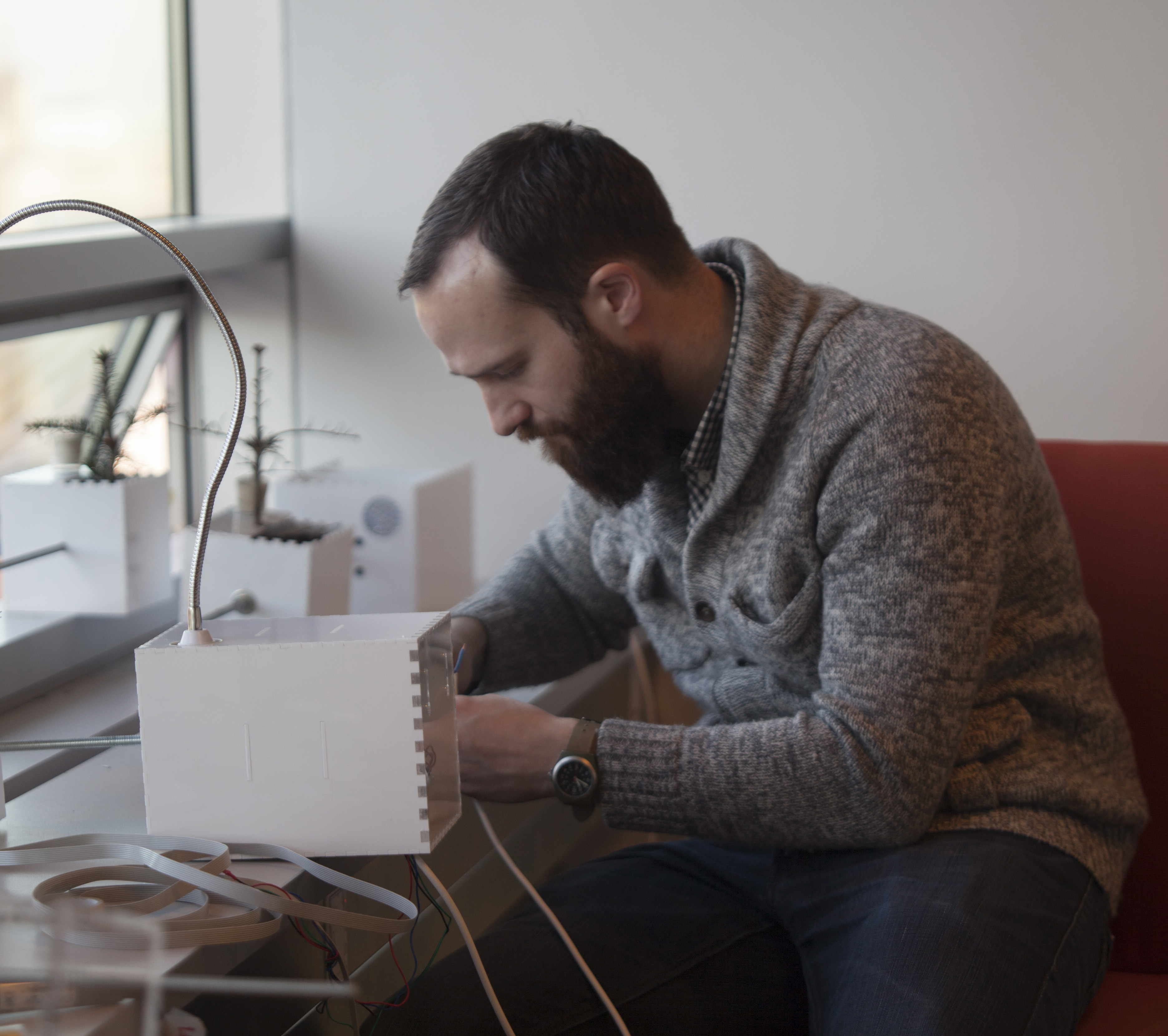
Workshop Pre-preparations: It is recommended to bring your laptop with Arduino IDE installed [Software Download Link]
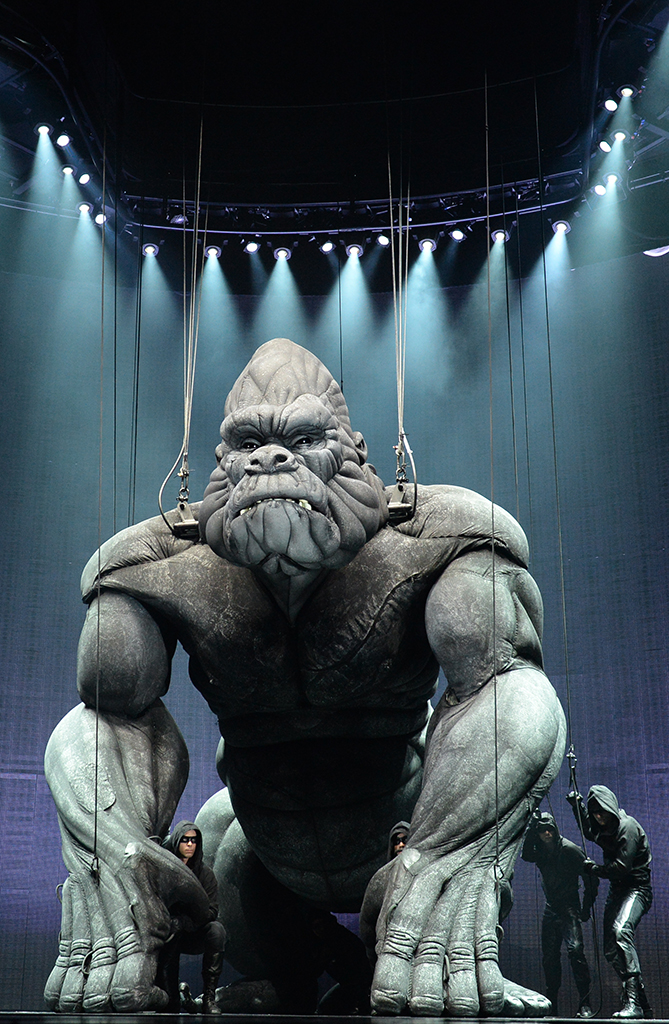
Workshop #2: Soft is the new hard:
incorporating flexibility in robot design and performance
Participants will be introduced to artistic approaches to creative movement using soft materials, led by an expert puppeteer.
Soft, flexible or compliant robots offer a range of movements opportunities beyond the conventional restrictions of hard surface/hard jointed mechanisms. Such flexibility also offers some conceptual flexibility in how we approach movement for robots. The world of puppetry has much to offer the open-minded robotics engineer: through a range of creative control exercises, we will explore how physical softness, flexibility and compliance in an object can expand the range and quality of expressive motions.
The workshop is conducted by Philip Millar.
Video Session
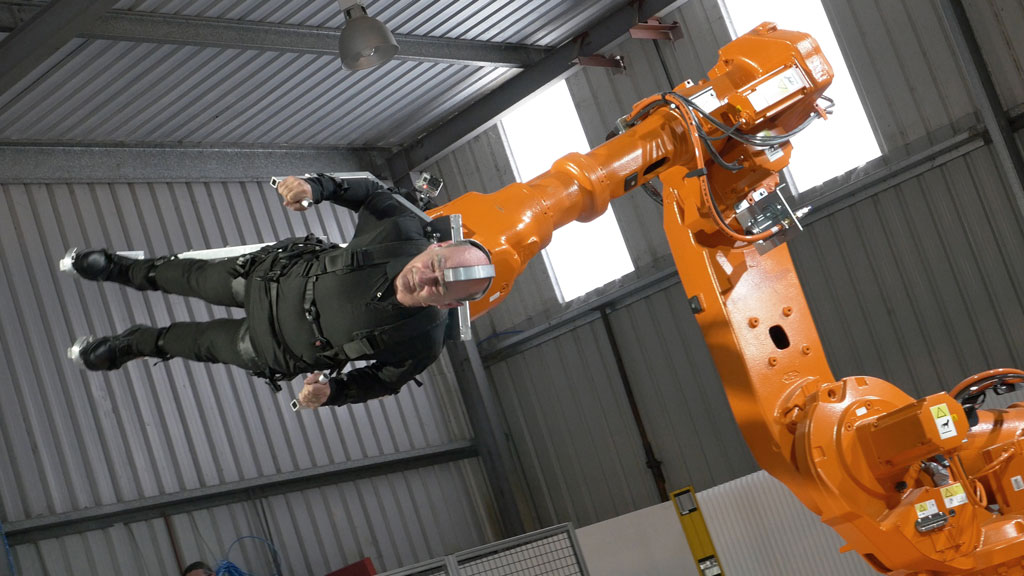
STELARC Retrospective: Still Wired|Hooked
We will celebrate Stelarc’s contributions to the field of Robotic Art over decades through a series of short videos of his most recent work.
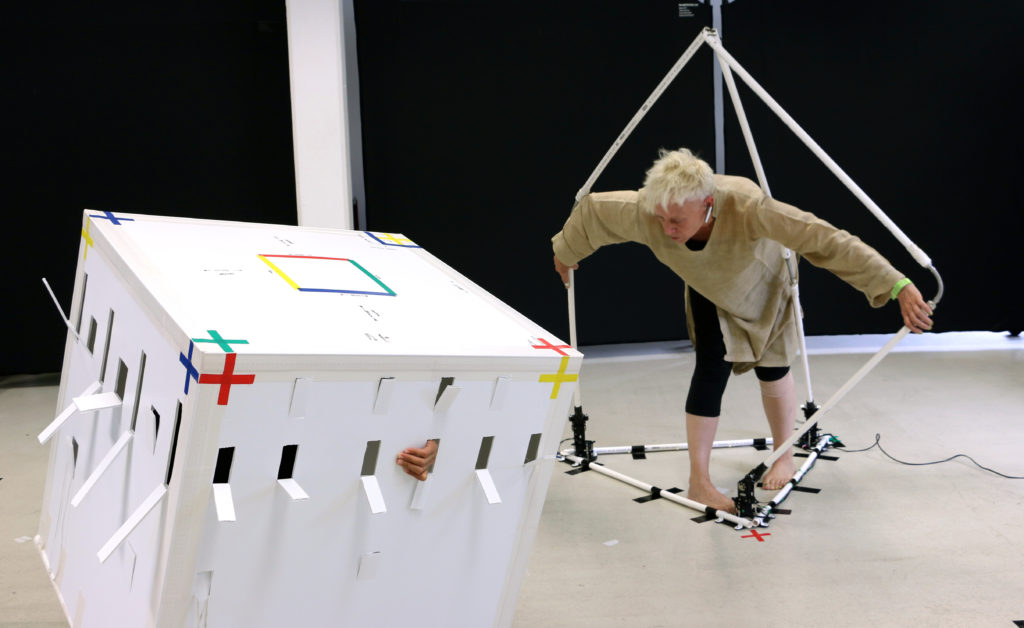
Machine Movement Lab by Petra Gemeinboeck
In this presentation, Petra will introduce her creative robotics practice and how it engages with aesthetic experiences of the nonhuman. Her practice problematizes the socio-cultural proposition of the ‘social robot’ and explores how we can reimagine and expand the ways in which we relate to robots without the veneer of human likeness. Her latest project, the Machine Movement Lab, a collaboration with Rob Saunders, involves an embodied interface to capture choreographers’ visions and translate dancers’ kinesthetic experience to develop a uniquely machinic movement repertoire for non-humanlike robots.
Petra Gemeinboeck is an artist and researcher, working across creative robotics, performance and feminist
theory, at the National Institute for Experimental Arts, UNSW | Art & Design. Her practice examines our
entanglements with machines and makes tangible the vulnerabilities and politics involved. For the past 7 years, Petra has collaborated with AI researcher Rob Saunders developing non-humanlike robots to explore questions of nonhuman agency and creativity. She currently leads an Australia Council Research project that investigates the potential of movement, and dance in particular, for reimagining how machines look, learn and affect us. Her artworks have been exhibited internationally, including at the Ars Electronica Festival, International
Triennial of New Media Art at NAMOC, Beijing, Centre des Arts Enghien at Paris, Foundation for Art and Creative Technology (FACT), Liverpool, Gallery of Modern Art, Brisbane, ICC Tokyo, and MCA Chicago.
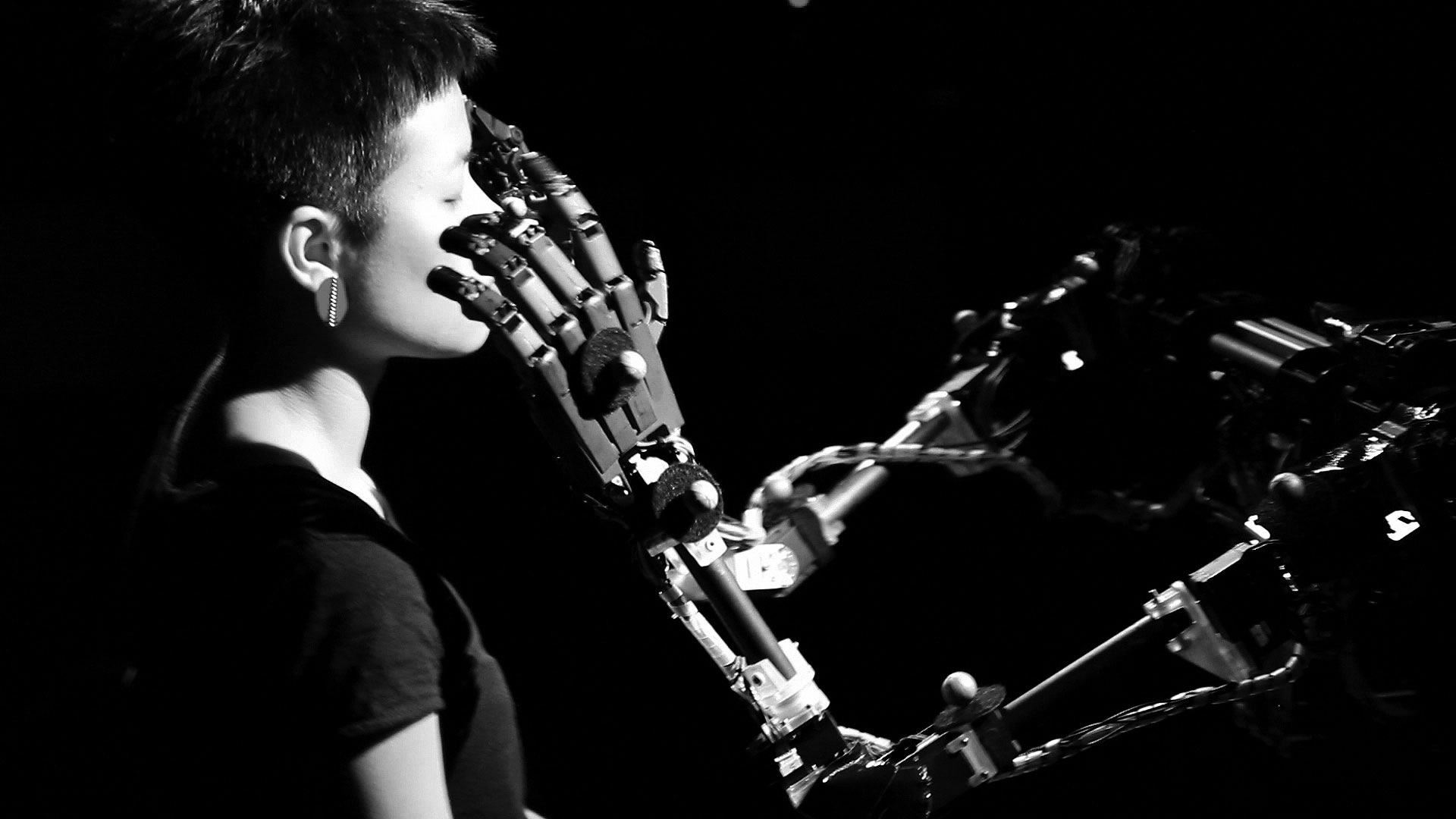
Fake robots: mystification, identification and experiential reactions by Louis Philippe Demers
In days of omnipresent news on Artificial Intelligence, dystopian UVAs and the blur between the virtual and the real, the robots sit at the very centre of this confluence of ontologies. This presentation addresses the machine use of human beings (to pastiche Weiner’s title) or how fakery and mystification are not only persuasive elements to enhance agency but also intrinsic components of their behaviours’ perception. Although the historical lineage of robotics is engraved with theatrical strategies and dramaturgy, further investigation of constructive principles from the performing arts and evidence from psychology and neurology can shift the perception of robotic agents in (cultural) environments. I discuss the relation between representation, movement and behaviour of bodies to establish links between constructed bodies (as in artificial intelligence) and perceived bodies (as performers on the theatrical stage for instance).Leaving aside the ultimate fake robot, the human replicant and its uncannymannerism, I present several artworks where human are in singular radical contact with robots or where the robots perform intrinsic complex human activities (cultural action). In the course of the description of these case studies, I will report on audience response, the situatedness of the machine and I will attempt to expand on those observations. If the robot becomes more than a mere object, its true nature, the fake, can only become more indiscernible..
Louis-Philippe Demers makes large-scale installations and performances. His projects can be found in theatre, opera, subway stations, art museums, science museums, music events and trade shows. Over the past two decades, he participated in more than seventy artistic and stage productions and has built more than 375 machines. Demers’ works have been featured at major venues such as Theatre de la Ville, Lille 2004, Expo 1992 and 2000, Sonambiente, ISEA, Siggraph and Sonar. He received six mentions and one distinction at Ars Electronica, the first prize of Vida 2.0, mentions at Vida 12.0 and 15.0, two jury recommendations at the Japan Media Arts Festival, the Interactive prize for Lightforms 98 and six prizes for Devolution including two Helpmann Awards. Demers was Professor of Digital Media and Exhibit Design/Scenography at the Hochschule für Gestaltung Karlsruhe, affiliated to the world renowned Zentrum für Kunst und Medientechnologie (ZKM, Germany). Since he first joined the Interaction and Entertainment Research Centre and then the School of Art, Design and Media at the Nanyang Technological University. Demers completed a Ph.D. on topic of the perception of machine performers.
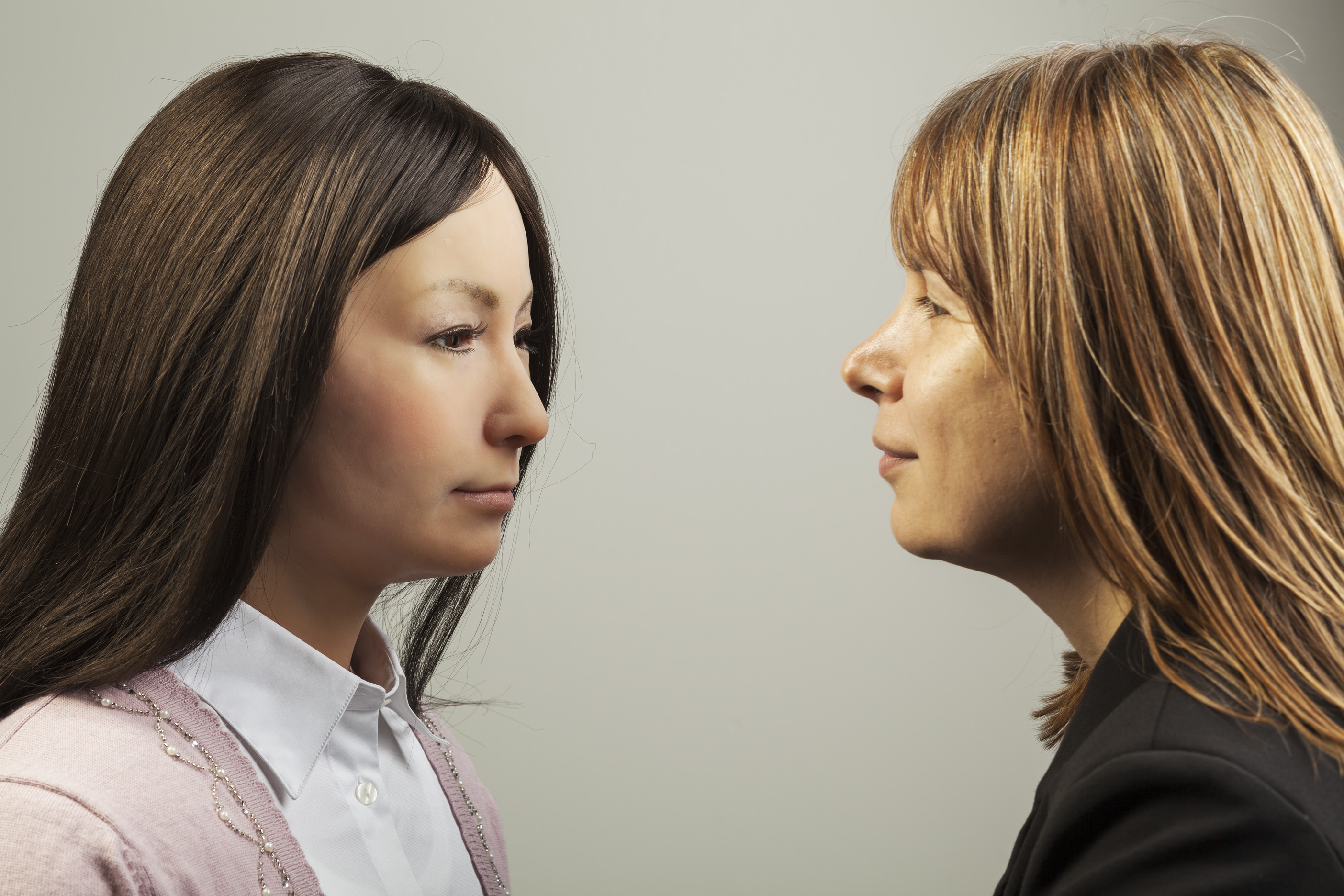
Beautiful not Intense: Robots, Creativity and the Corporate World by Mari Velonaki
Mari Velonaki will introduce her new robotic project, “Beautiful not Intense,” conducted in collaboration with Fuji Xerox Japan. The project aims to use creative principles in the design and deployment of a new social robot that will co-inhabit a corporate environment with office workers.
Mari Velonaki’s research is situated in the multi-disciplinary field of Social Robotics. Her approach to Social Robotics’ research has been informed by aesthetics and design principles that stem from the theory and practice of Interactive Media Art. Velonaki has made significant contributions in the areas of Social Robotics, Media Art and Human-Machine Interface Design. Her career outputs across these fields are extensive. Velonaki began working as a media artist/researcher in the field of responsive environments and interactive interface design in 1997. She pioneered experimental interfaces that incorporate movement, speech, touch, breath, electrostatic charge, artificial vision and robotics, allowing for the development of haptic and immersive relationships between participants and interactive agents. She is the recipient of several competitive grants, including ARC Discovery, Linkage, LIEF an ARC Fellowship, an Australia Council of the Arts Visual Arts Fellowship, Australia-Japan Foundation, Fuji Xerox Innovation, AOARD.
Velonaki is a Professor of Social Robotics at Art & Design, UNSW. She is the founder and director of the Creative Robotics Lab (Art & Design UNSW) and the founder and director of the National Facility for Human Robot Interaction Research (UNSW, USYD, UTS, St Vincent’s Hospital).
Mari’s robots and interactive installations have been exhibited worldwide, including: Victoria & Albert Museum, London; National Art Museum Beijing; Gyeonggi Museum of Modern Art, Korea; Aros Aarhus Museum of Modern Art, Denmark; Wood Street Galleries, Pittsburgh; Millennium Museum – Beijing Biennale of Electronic Arts; Ars Electronica, Linz; European Media Arts Festival, Osnabruck; ZENDAI Museum of Modern Art, Shanghai; Art Gallery of NSW, Sydney, Museum of Contemporary Arts, Sydney; Conde Duque Museum, Madrid.
Installation
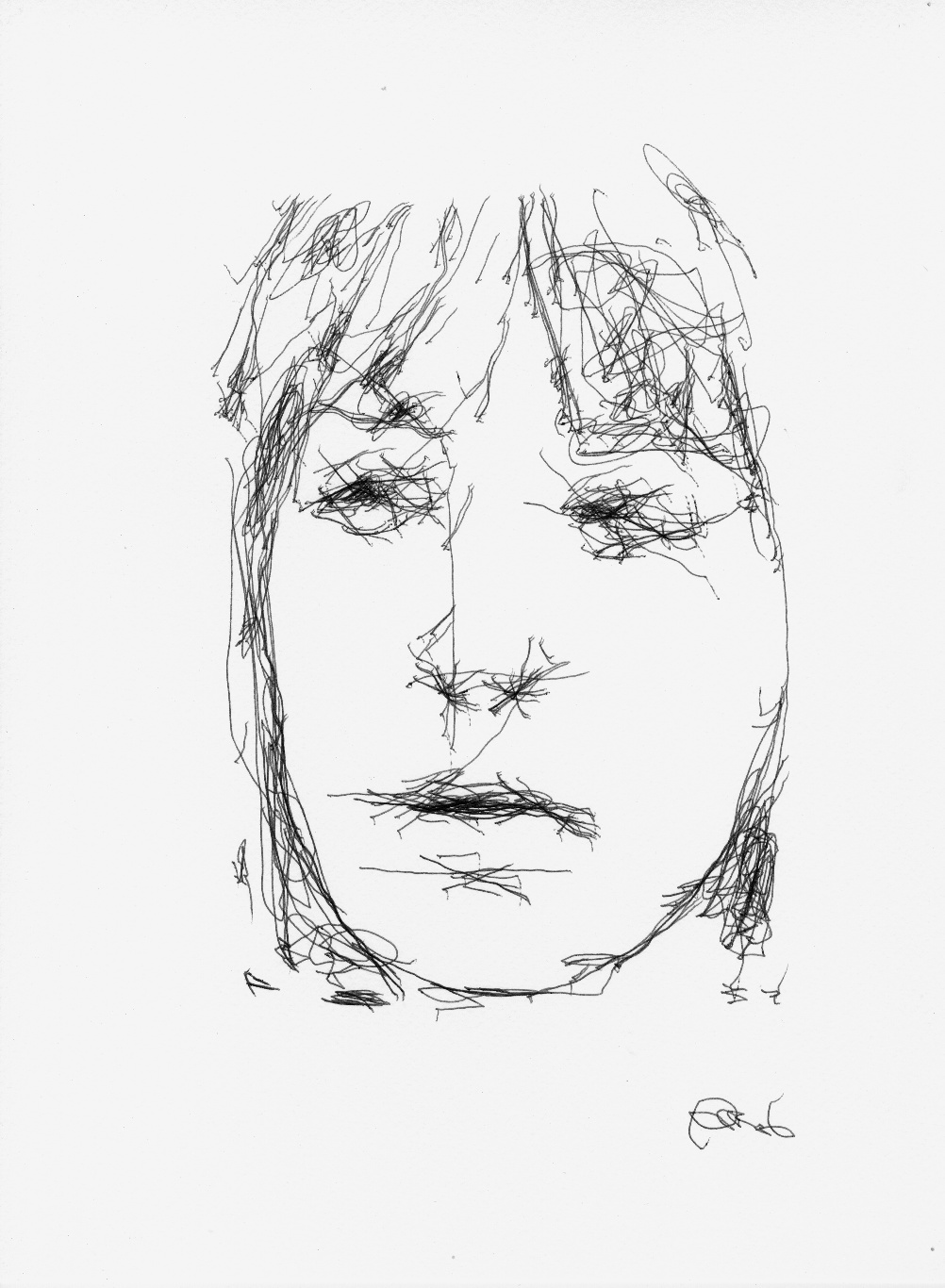
HUMAN STUDY #1,3RNP
Human Study#1, 3RNP is an installation where the human becomes an actor. In a scene reminiscent of a life drawing class, the human takes the sitter’s role to be sketched by 2 robots.
When the subject arrives by appointment, he is seated in an armchair. An assistant attaches sheets of paper on to the robots’ desks and wakes each one up, twisting its armour knocking three times.
The robots, stylised minimal artists, are only capable of drawing obsessively. Their bodies are old school desks on which the drawing paper is pinned. Their left arms, bolted on the table, holding black bic biros, are only able to draw. The robots, named Paul-n all look alike except for their eyes, either obsolete digital cameras, or low res webcam. Their eyes focus on the subject or look at the drawing in progress.
The drawing sessions last up to 30 min, during which time the human cannot see the drawings in progress. The sitter only sees the robots alternating between observing and drawing, sometimes pausing. The sounds produced by each robot’s motors create an improvised soundtrack. The sitter is in an ambivalent position, at the mercy of the robots’ scrutiny, but also as an object of artistic attention. As the model in a life drawing class, the human is personality-less, an object of study. The human sitter is passive, the robots taking what is perceived as the artistic role. Although immobile, the model is active in keeping the pose, for the spectators the sitter is an integral part of the installation.
Paul In
Patrick Tresset’s robots are actors whose behavioral patterns are developed in the form of computer programs, gradually crafted as a sketch seeking the right gesture. These mechanical bodies have no soul, no spirit, but they are intended to tell us ‘stories of humanity’. Thousands of lines of code are constantly reworked as a messy, unachievable sketch that forms a cybernetic self-portrait, simulating the behaviour of almost an animal of an artist without pride, without intelligence; a naive artist, a candid extreme without a priori assumptions, without illusion, without a conscience… It only has technological and nervous reactions to stimuli of our reality. It creates a simulacrum, yet carries within it something of us. It observes us, reacts to us and represents us. The traces of its activity, its movements, reactions and decisions are retained as memories on paper through the accumulation of traits that now feel human.
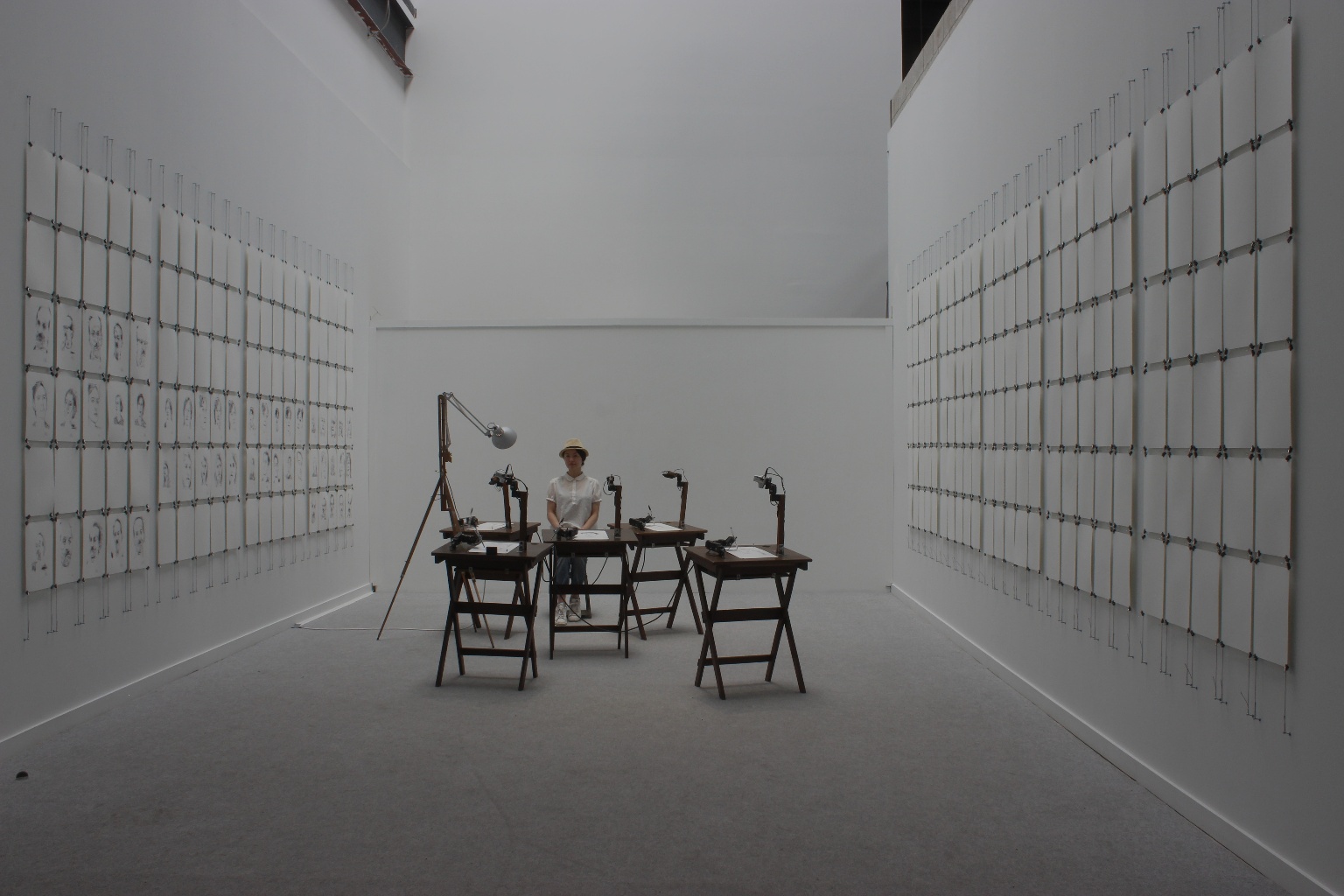
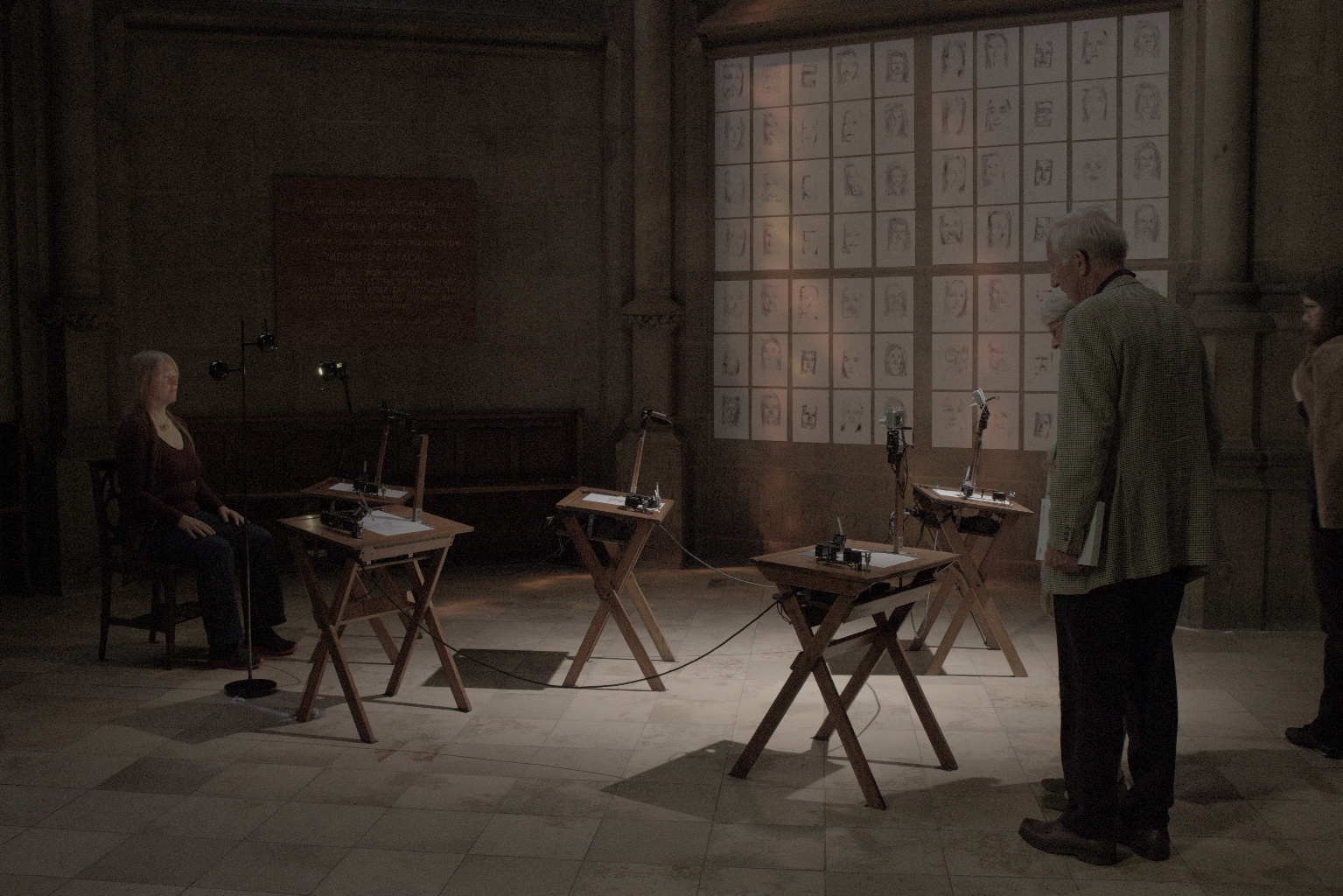
Robots and Art Forum Co-Chairs
Damith Herath
Damith holds a PhD in Robotics from the University of Technology, Sydney for his research work at the ARC Centre of Excellence for Autonomous Systems (CAS) on robotic mapping and navigation. He has over a decade of experience leading multidisciplinary robotic research projects and is the co- and founding chair of the International Workshop on Robotics & Art held in 2011, 2014, 2017 alongside key robotics conferences. Damith is the CEO and co-founder of Robological, a multi-award winning Robotics Startup based in Canberra, named one of the 23 most innovative young technology companies in Australia in 2014. Damith is currently an Assistant Professor in Software Engineering attached to the Human Centred Technology Research Centre, University of Canberra
Ken Goldberg
Artist and professor of engineering at UC Berkeley. Goldberg explores the intersection of the digital and the natural worlds. His artworks include a living garden tended by a robot via the internet and the award-winning film “Why We Love Robots”. Goldberg’s has shown at the Whitney Biennial, Venice Biennale, Pompidou Center, Walker Art Center, Ars Electronica, ZKM, ICC Biennale, Kwangju Biennale, Artists Space, and the Kitchen. He is Founding Director of Berkeley’s Art, Technology, and Culture Colloquium and named IEEE Fellow in 2005. His work is in several permanent collections including the Whitney in NYC.
Elizabeth Jochum
(BA Wellesley College; MA, PhD University of Colorado) is an assistant professor at Aalborg University (DK) in the Research Laboratory for Art and Technology (RELATE). Her research focuses on the intersection of robotics, art, and performance. She is the co-founder of the Robot Culture and Aesthetics (ROCA) and a member of Aalborg U Robotics, and serves on the editorial board of Global Performance Studies. Her publications appear in Robots and Art, Controls and Art, Robotics and Autonomous Systems, and the International Journal of Social Robotics.
Contact Us
Use this form to contact the organisers.